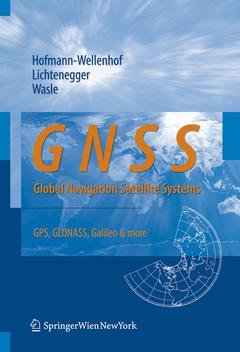Description
GNSS – Global Navigation Satellite Systems, 2008
GPS, GLONASS, Galileo, and more
Authors: Hofmann-Wellenhof Bernhard, Lichtenegger Herbert, Wasle Elmar
Language: English
Subjects for GNSS – Global Navigation Satellite Systems:
168.79 €
Subject to availability at the publisher.
Add to cart518 p. · 16.5x24.2 cm · Paperback
Description
/li>Contents
/li>Biography
/li>Comment
/li>
This book extends the scientific bestseller "GPS - Theory and Practice" to cover Global Navigation Satellite Systems (GNSS) and includes the Russian GLONASS, the European system Galileo, and additional systems. The book refers to GNSS in the generic sense to describe the various existing reference systems for coordinates and time, the satellite orbits, the satellite signals, observables, mathematical models for positioning, data processing, and data transformation. This book is a university-level introductory textbook and is intended to serve as a reference for students as well as for professionals and scientists in the fields of geodesy, surveying engineering, navigation, and related disciplines.
Berhard Hofmann-Wellenhof, born in 1951, is Professor for Navigation and Satellite Geodesy at the TU-Graz. He is Co-Author of numerous books and papers, among them “Global Positioning System”, 5th ed., SpringerWienNewYork.
Herbert Lichtenegger, born in 1941, is assistant professor at the Institute for Navigation and Satellite Geodesy at the TU-Graz. He is Co-Author of numerous books and papers, among them “Global Positioning System”, 5th ed., SpringerWienNewYork.
Elmar Wasle, born in 1975, works for a private enterprise and is specialised in GPS.
Builds upon and expands on the successful book "GPS - Theory and Practice"
Elementary, general approach - basic mathematical knowledge is sufficient
No products or manufacturers are endorsed; therefore, the book will remain up-to-date




